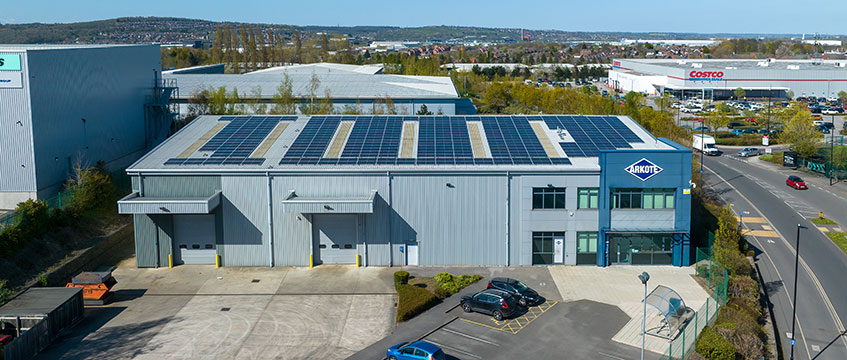by Gareth Jones
Looking back at the boom years of the cinema industry, to the days when the major studios and the megastars of the 1930s and 1940s joined forces to create the celluloid culture which was always 90% myth, it is too easy to wallow in commercial nostalgia.
Cinema succeeded in the early Hollywood years because there were no cultural comparables. Television did not exist and live theatre was a minority leisure pursuit. The success of the industry in the 1930s is easy to understand because, in effect, it had the monopoly on leisure time, with competition from other activities very limited. Cinema at that time (and indeed to a certain extent today) provided an escape from the humdrum for most people.
This is not the platform to compare acting techniques or to discuss the technicalities of film making, but in terms of sheer craft there seems little doubt that modern products have the edge over their 1930 predecessors.
Notwithstanding the greater technical ability of the later film makers, the decline of the “traditional” cinema can be traced to the early post-war years; to the introduction, growth and increasing sophistication of television, combined with a lack of “product”; and the failure of operators to re-invest in the cinemas.
Since 1950, hundreds of cinemas in Britain have been closed or converted to other uses including bingo, snooker or retail trading, and attendance figures have fallen from 126m in 1975 to a relatively paltry 55m in 1988.
By 1985, the industry’s outlets in Britain had reached an all-time low. The main operating companies were then Cannon — who had acquired Classic Cinemas, the Star Group and EMI (ABC chain) — and Rank. Other cinemas were operated by Granada and a surprisingly large number of independents, many still in existence today.
Despite the state of the industry in 1985, it was at this point that the American idea of multiplexes began to emerge in the UK. Both the existing major operators and potential newcomers to the UK undertook a considerable reassessment of the industry and there was a unified view that the relatively small auditorium, multi-screen cinemas were the route to restoring attendance figures. However, there was and still is a question mark over product quality.
The fact of the matter remains that, with few exceptions, cinemagoers in this country visit the cinema to see a specific film, rather than simply to see any film.
While today’s multiplexes may encourage people to have an outing to the cinema, to stay longer — perhaps over a meal — the main object of the outing is to see a particular film. It may be commercially unpalatable, but if the product is not available, the customers will not attend the cinemas. The film producers must come up with the goods to restore and maintain attendances.
Historically, one associated problem was the barring arrangements between cinemas. When one cinema showed a first-run production release, a nearby cinema could only show another production release or a second run from the same production company. This situation is now being resolved and a freer market created.
As stated earlier, in 1985, notwithstanding the sorry state of the industry and the continuing drop in admissions, AMC entered the cinematic arena. With the opening of The Point at Milton Keynes in October 1985, the group became the first foreigner in the UK marketplace and now, less than five years later, they operate from 10 locations including the Metro Centre, Merryhill, Dudley and Telford. They have a further 12 units under construction including Meadowhall and Whiteleys.
In the wake of AMC’s expansion, there have been a number of new entrants in the field. Before the merger with AMC, CIC operated a six-screen unit at High Wycombe which, prior to the opening of Cannon’s Parkhead unit, was regarded in the industry as the state of the art for multiplex development.
If AMC/CIC set the scene, the two were quickly followed by others who detected something of a cinematic renaissance. These included Show Case/National Amusements — now with units in Derby, Nottingham and Peterborough, and others, such as the development at junction 10 of the M6, in the pipeline.
Warner Brothers followed and now have multiplexes under construction at Bury (opening very shortly), Newcastle, Preston, York and Basingstoke, with plans for further units at Thurrock, Doncaster and Middlesbrough. The latest entry in the market is Gallery Cinemas — formerly known as Cineplex Odeon or CO Cinemas. They currently operate at Slough in the old Maybox unit, and have agreed terms on sites at Staples Corner, Gloucester Docks and at London’s Trocadero.
Despite the increased numbers, the original operators — notably Rank and Cannon — still lead the field in terms of the number of screens. Cannon continued their expansion following the acquisition of Classic, Star Group and ABC by buying the cinema interests of Granada.
The group now also operate at Salford Quays — after The Point at Milton Keynes, the second multiplex in the country — the Forge at Parkhead and Ocean Village, Southampton. There are a number of proposals in the pipeline which should reach fruition by the end of the year.
Rank currently propose operating multiplexes at Hull, Stoke and Hemel Hempstead and intend to combine their future multiplexes with their leisure villages.
It is interesting to note the difference in market posture between the old hands such as Rank and Cannon and the new blood. The newcomers have taken the lead in terms of the numbers of multiplexes proposed or under construction.
But members of the cinema establishment believe that the refurbishment of existing stock is just as important as creating new outlets — a course on which they were committed before 1985 in any case.
As to the shape and size of multiplex operations, a number of different schools of thought are emerging.
Broadly, multiplexes fall into the 25,000-sq ft to 45,000-sq ft range, depending on location and the type of operation. Some, such as Warner Brothers’ cinema at Bury, are larger.
The number of screens and seating capacity is also variable from one operator to another. Cannon, for instance, wish to have several different screen sizes and a seating capacity in the order of 2,000. Others, such as AMC, prefer 10 or 12 screens of the same size. The common denominator for all is adequate parking, either shared with other users or for their sole use.
Multiplexes are found on sites in out-of-town centres on retail parks, on stand-alone locations or on leisure parks such as those at Derby, Bracknell, Swindon and Basing-stoke. In other schemes, such as the new retail development at the Forge at Parkhead, Cannon operate a multiplex, but with a difference.
Unlike developments of the 1960s and 1970s, the leisure element is the dominant force in the scheme and is not hidden at the back as a commercial afterthought to the shopping. In other words, the cinema creates a major part of the attraction of the shopping centre.
In all instances, multiplex proposals are generally encouraged by local planning authorities, subject to the stumbling blocks of parking and/or traffic generation.
As to the future, there are many schools of thought about cinematic direction in the UK, particularly concerning the style and form of new outlets.
While the refurbishment of existing stock and new-build cinemas will undoubtedly attract a new generation of cinemagoers, it is still all too evident that the most important aspect of all is the quality of the product itself — the films.
In the 1930s, the cinema was virtually the only evening out available to the family. Nowadays, it is just one of a number of entertainment options, including staying put at home and watching television. Satellite TV, with its dozens of extra channels, appears to be a slow starter but it will obviously be a significant factor in the years ahead.
For all that, multiplex growth over the last five years or so has been dramatic and all the signs are that it will continue apace for the next two or three. At some stage, there is an obvious risk of overkill. One interesting fact is that the number of operating multiplexes is currently less than 20, but the real test may be over the next two years when this number will at least double.
From the reaction of the existing major operators, Rank and Cannon, it would appear that the new people in the market may be prepared to take a lower return on capital invested than has traditionally been the case. Whether this will prove to be a wise decision in the long run remains to be seen, especially with interest rates continuing to rise.
While the gut reaction is that traditional cinemas and the new-style multiplexes will be able to operate in tandem, the cautious operators are designing multiplexes with one eye on alternative uses should the market fail.
At the same time, while the big operators currently rule the roost, I am sure there will continue to be room for smaller upmarket independents such as City Screen, Curzon and Mainline to run small art-orientated specialised cinemas screening alternatives for cinemagoers.










